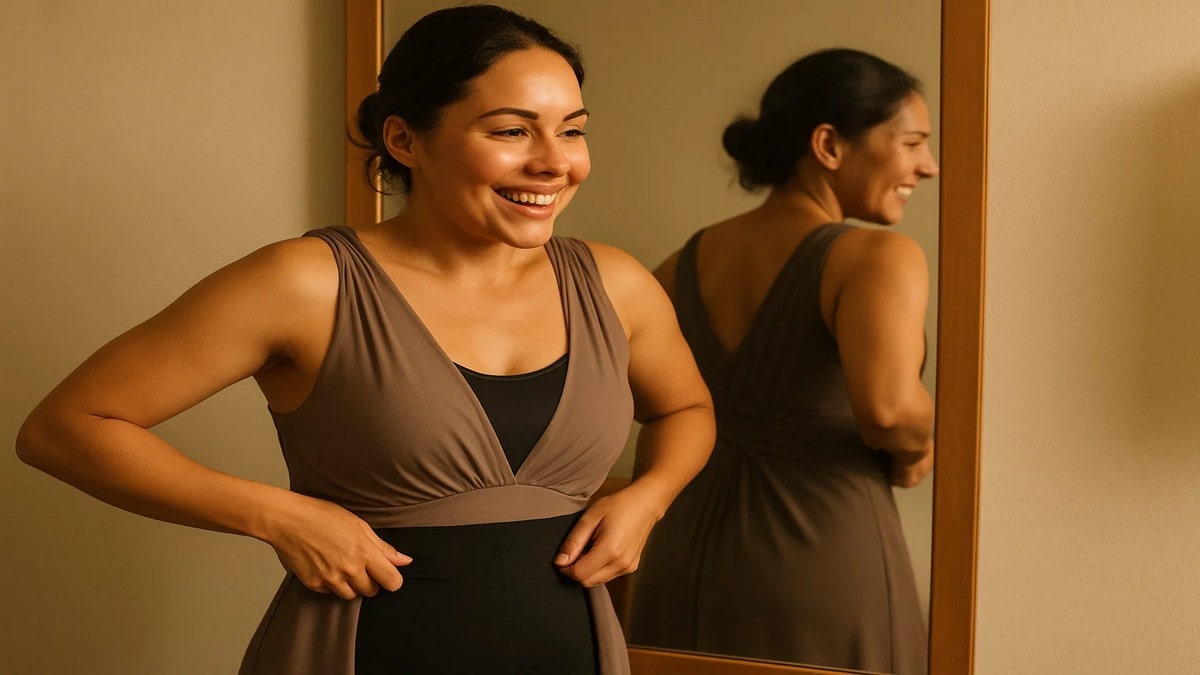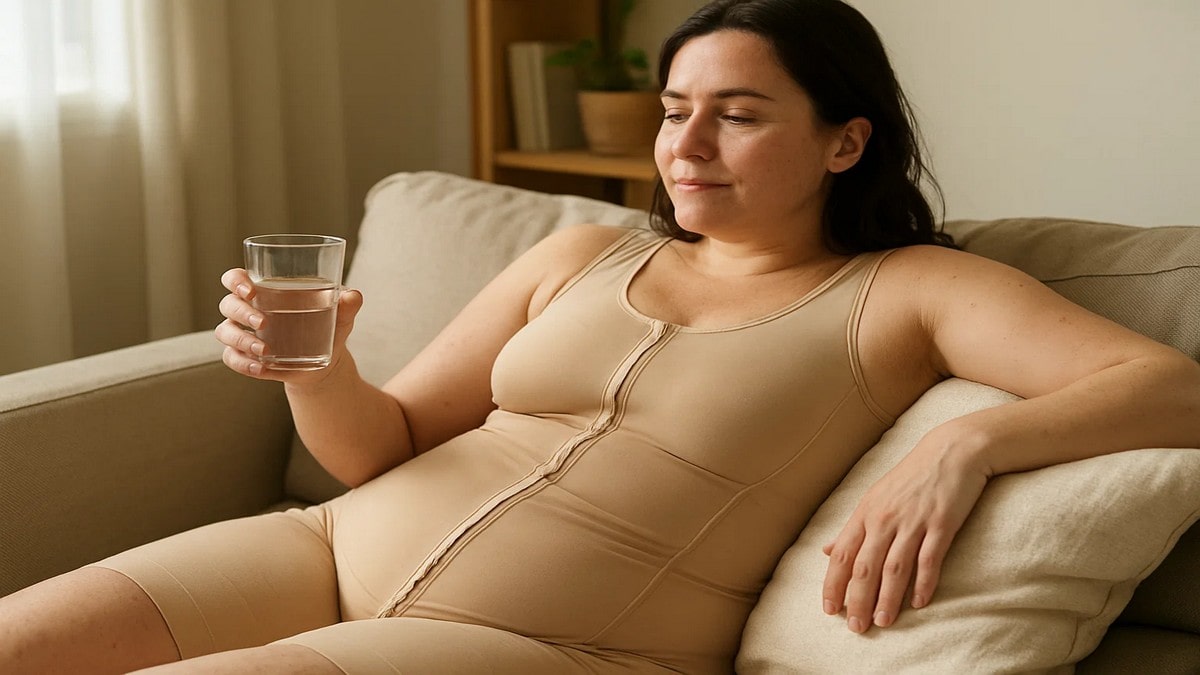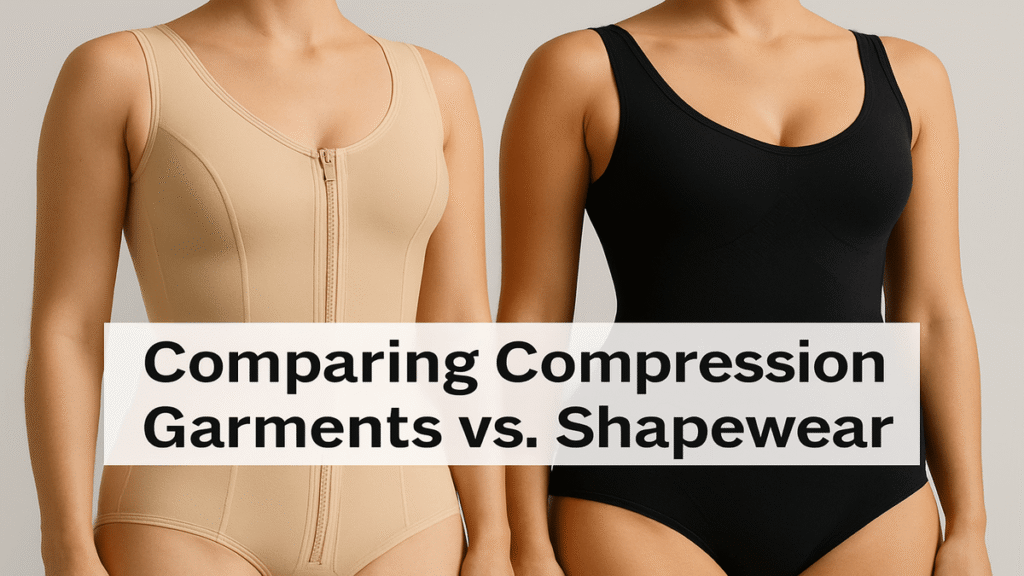In recent years, both compression garments and shapewear have become mainstream in fashion, fitness, and medical industries. Yet, while they might seem similar at first glance, these two categories serve vastly different purposes. Whether you’re recovering from surgery, dealing with chronic conditions, or simply aiming to enhance your appearance, understanding the distinctions is crucial. This article aims to answer the question: “What’s the difference when comparing compression garments vs. shapewear?”
Understanding the Basics
Before diving into technicalities, let’s define each term.
Compression garments are specialized clothing items designed to apply pressure to specific body parts. They are commonly used for medical or performance-enhancing purposes. These garments support circulation, reduce swelling, and aid in recovery.
Shapewear, on the other hand, focuses primarily on aesthetic enhancement. Made from stretchy materials like spandex, shapewear smooths out the body’s contours under clothing, offering a slimmer and more polished look.
While both use compression to some extent, the goals and effects are not the same. That’s why comparing compression garments vs. shapewear goes beyond fabric and fit—it touches the core of function, safety, and long-term impact.

Compression Garments: Functional and Medically Backed
The primary role of compression garments is rooted in medical therapy and recovery. After surgeries such as liposuction, tummy tucks, or C-sections, doctors often recommend these garments to control swelling and promote healing. In sports, athletes wear them to improve blood flow and reduce muscle fatigue.
One of the best-known therapeutic applications is managing Compression garments and varicose veins. By increasing pressure on the legs, these garments encourage proper vein function and reduce discomfort caused by blood pooling.
Beyond circulation issues, there’s growing interest in Compression garments for arthritis. These pieces provide joint support, reduce inflammation, and improve mobility—especially in the knees, wrists, and elbows. Unlike shapewear, which offers uniform pressure, compression garments are engineered for graduated compression, ensuring targeted efficacy.
Shapewear: Beauty Meets Confidence
Shapewear is designed with cosmetic appeal in mind. It provides immediate visual changes by flattening the stomach, lifting the buttocks, and smoothing out the waistline. It’s ideal for special occasions or daily use under fitted outfits.
However, it’s important to note that shapewear is not meant for extended or medical use. Extended wear of tight garments can lead to breathing difficulties, digestive discomfort, or even nerve compression if worn improperly.
When comparing compression garments vs. shapewear, one stark difference is duration of safe usage. Compression garments are often prescribed for 8–12 hours of daily wear, while shapewear is best kept for shorter periods due to potential side effects.
The Fabric Factor: Medical-Grade vs. Aesthetic Fit
Another key point in comparing compression garments vs. shapewear lies in material and construction. Compression garments are typically made from medical-grade textiles that are breathable, moisture-wicking, and durable. They are designed to maintain their shape even after extended wear and washing.
Shapewear is usually crafted from lighter, more flexible fabrics intended to be worn discreetly under clothing. While stylish and affordable, shapewear often lacks the supportive engineering that medical compression requires.
This difference in material is a clear reflection of the medical vs. cosmetic compression debate. One is structured for health, healing, and muscle support, while the other prioritizes look, feel, and social confidence.
Benefits of Compression Garments Beyond Medicine
Although they are primarily known for post-surgical recovery, compression garments have applications beyond the medical world. For instance, there is increasing usage of Compression garments for muscle stress in athletic and physiotherapy settings. Athletes use them post-training to reduce soreness, stabilize muscle groups, and accelerate recovery.
In fact, many everyday consumers are using compression garments for tasks like long-haul flights, where sitting for extended periods can result in swollen ankles and legs. Their ability to maintain circulation makes them ideal for both health-conscious travelers and professionals with sedentary jobs.
The Psychological Impact of Shapewear
One underrated aspect of shapewear is its psychological effect. For many, it provides a confidence boost, especially during events where appearance matters. It helps individuals feel more in control of how their body is perceived, which can translate to better self-esteem.
However, experts caution against becoming overly reliant on shapewear for self-image. It’s crucial to understand that while it reshapes appearance temporarily, it does not provide long-term changes to the body’s structure or health.
Therefore, when comparing compression garments vs. shapewear, it’s not just a physical comparison—but a mental and emotional one too. Compression garments may improve physical health, but shapewear can uplift emotional wellbeing, albeit temporarily.
Medical vs. Cosmetic Compression: Where Do You Stand?
The concept of medical vs. cosmetic compression is at the heart of this discussion. Medical compression serves clinical and physiological functions—like wound healing or joint stabilization—while cosmetic compression focuses on superficial shaping.
Consumers need to be aware of their intended use before choosing between the two. Wearing shapewear for a medical purpose, such as after surgery, can lead to complications. Similarly, wearing high-grade compression garments just for a night out may be overkill and uncomfortable.
To summarize:
-
Medical compression offers long-term health benefits
-
Cosmetic compression offers short-term aesthetic benefits
Knowing this distinction will help you make informed purchasing decisions that align with your goals.

Misconceptions in Marketing
One major issue when comparing compression garments vs. shapewear is the confusion created by marketing strategies. Some brands blur the line between medical compression and shapewear to appeal to a broader customer base. Terms like “sculpting,” “firming,” or “therapeutic” are thrown around loosely.
This creates a grey area where consumers mistakenly purchase cosmetic products for medical use—or vice versa. That’s why it’s essential to consult a healthcare professional before using any compression garment for therapeutic reasons.
If you’re considering shapewear but have underlying health issues, a better solution may lie in the realm of medical vs. cosmetic compression, with an emphasis on the medical side.
Situational Use: When to Choose What?
To make it easier, here’s a quick guide for choosing between the two:
| Purpose |
Recommended Product |
| Post-surgery recovery | Compression Garments |
| Daily posture support | Compression Garments |
| Special event appearance | Shapewear |
| Long flights or travel | Compression Garments |
| Gym or athletic recovery | Compression Garments |
| Office wear slimming | Shapewear |
| Arthritis or joint pain | Compression Garments
|
In summary, each product has its unique strengths. Understanding the difference is essential in finding the perfect fit for your needs.
Conclusion: A Strategic Comparison
In the ever-growing world of body-contouring and health-enhancing garments, knowing the difference between compression garments and shapewear can make or break your wellness journey. While they may appear similar on the surface, their intent, structure, and results are worlds apart.
When comparing compression garments vs. shapewear, it becomes clear that one prioritizes function and healing, while the other emphasizes form and aesthetics. Both have their place—but choosing the right one depends on your personal goals.
Whether you’re recovering from surgery, managing chronic conditions like arthritis, or just want to feel your best in a tight dress, your choice should be informed. Don’t be swayed by marketing jargon. Understand the medical vs. cosmetic compression debate, consider your health, and make the decision that best supports your body and lifestyle.







